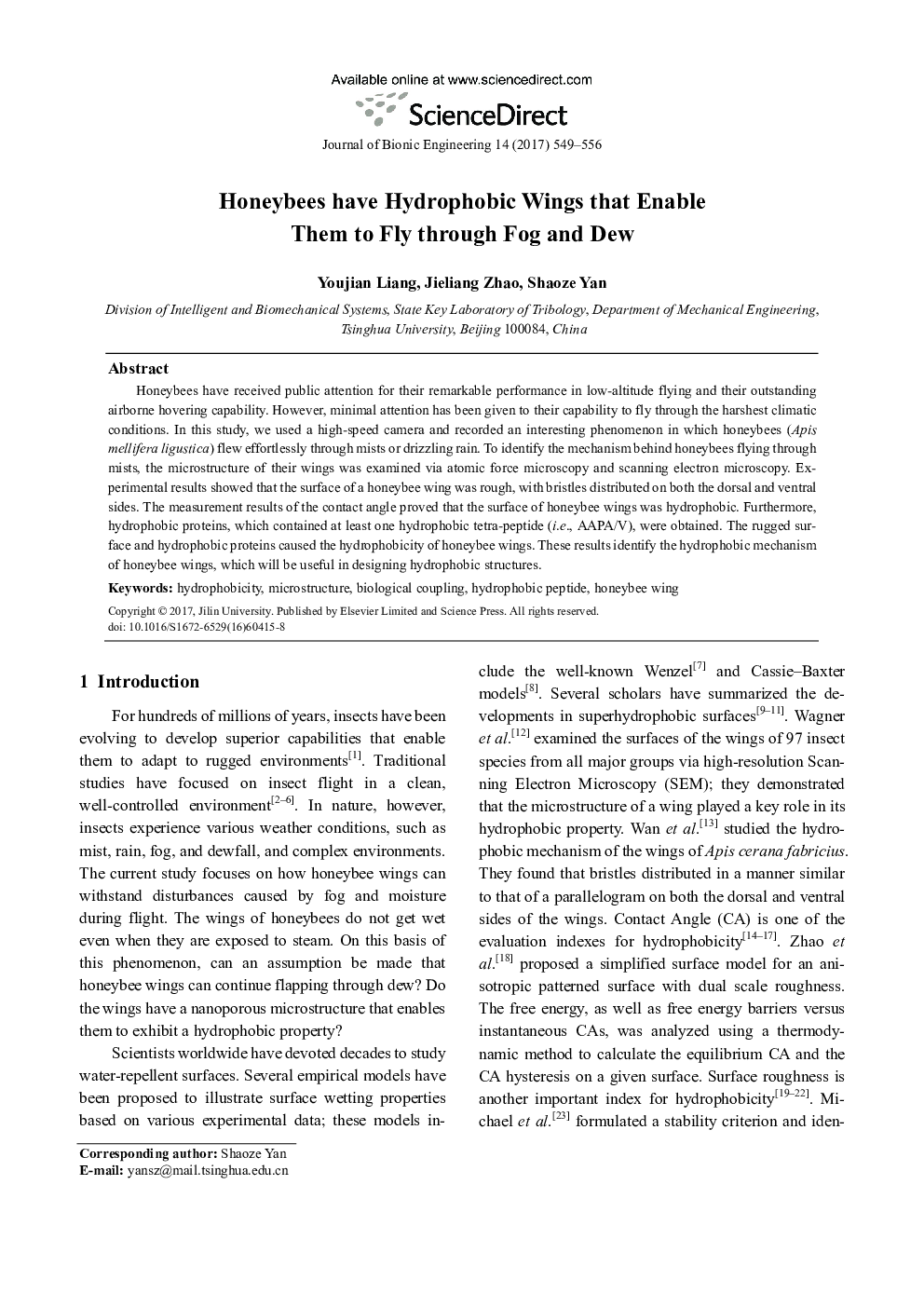| کد مقاله | کد نشریه | سال انتشار | مقاله انگلیسی | نسخه تمام متن |
|---|---|---|---|---|
| 7216475 | 1470200 | 2017 | 8 صفحه PDF | دانلود رایگان |
عنوان انگلیسی مقاله ISI
Honeybees have Hydrophobic Wings that Enable Them to Fly through Fog and Dew
ترجمه فارسی عنوان
زنبور عسل دارای بال های هیدروفوب است که آنها را قادر می سازد تا از طریق مه و دود پرواز کنند
دانلود مقاله + سفارش ترجمه
دانلود مقاله ISI انگلیسی
رایگان برای ایرانیان
کلمات کلیدی
هیدروفوبیت، ریز ساختار، زوایای بیولوژیک، پپتید هیدروفوب بالون زنبور عسل،
موضوعات مرتبط
مهندسی و علوم پایه
سایر رشته های مهندسی
مهندسی پزشکی
چکیده انگلیسی
Honeybees have received public attention for their remarkable performance in low-altitude flying and their outstanding airborne hovering capability. However, minimal attention has been given to their capability to fly through the harshest climatic conditions. In this study, we used a high-speed camera and recorded an interesting phenomenon in which honeybees (Apis mellifera ligustica) flew effortlessly through mists or drizzling rain. To identify the mechanism behind honeybees flying through mists, the microstructure of their wings was examined via atomic force microscopy and scanning electron microscopy. Experimental results showed that the surface of a honeybee wing was rough, with bristles distributed on both the dorsal and ventral sides. The measurement results of the contact angle proved that the surface of honeybee wings was hydrophobic. Furthermore, hydrophobic proteins, which contained at least one hydrophobic tetra-peptide (i.e., AAPA/V), were obtained. The rugged surface and hydrophobic proteins caused the hydrophobicity of honeybee wings. These results identify the hydrophobic mechanism of honeybee wings, which will be useful in designing hydrophobic structures.
ناشر
Database: Elsevier - ScienceDirect (ساینس دایرکت)
Journal: Journal of Bionic Engineering - Volume 14, Issue 3, July 2017, Pages 549-556
Journal: Journal of Bionic Engineering - Volume 14, Issue 3, July 2017, Pages 549-556
نویسندگان
Youjian Liang, Jieliang Zhao, Shaoze Yan,
